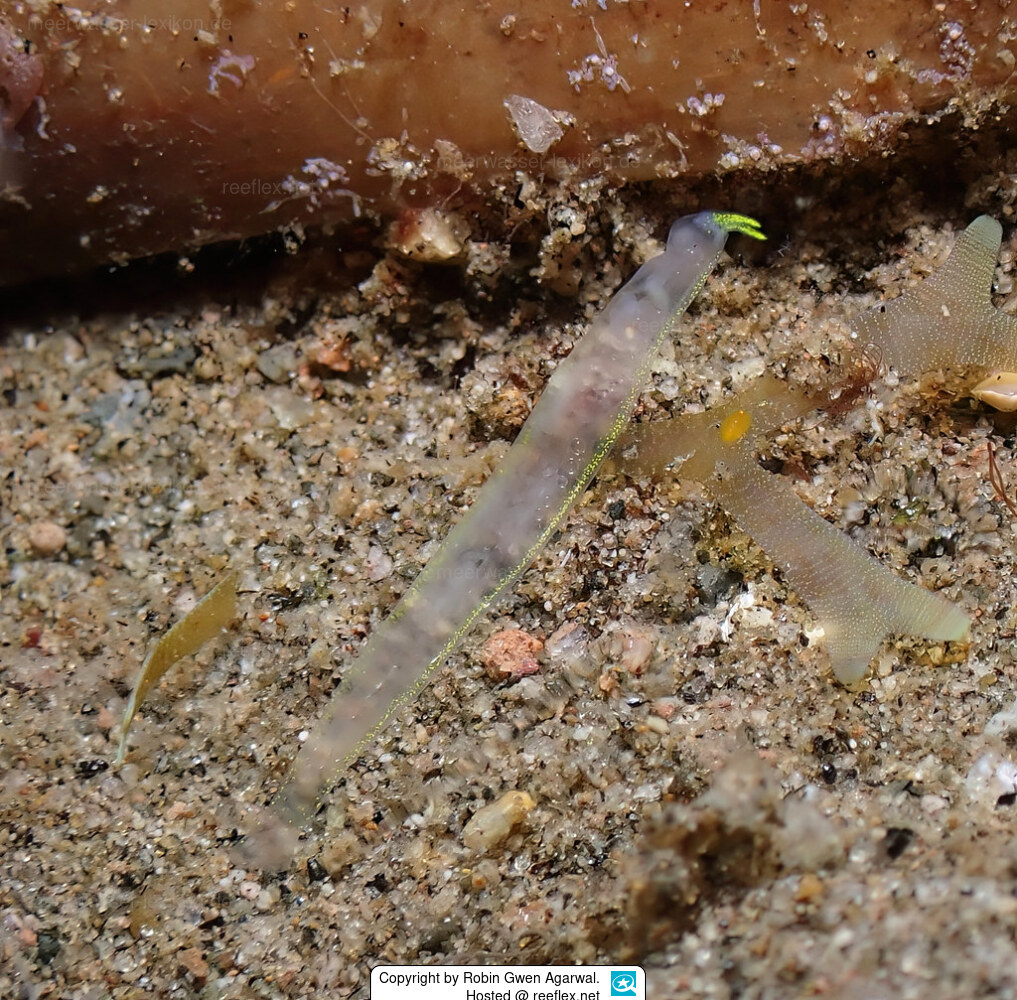Info
Cephalopyge trematoides (Chun, 1889)
Cephalopyge trematoides is a slug of the family Phylliroidae. Members of the family are medium-sized pelagic species of tree snails and belong to the nudibranch family. They feed on cnidarians. The genus name "Cephalopyge" refers to the location of the anus (-pyge) on the back just behind the head (cephalo-).
Cephalopyge trematoides has an elongated, streamlined body that tapers to a blunt "tail." There are two smooth, retractable rhinophores on the head. The anus opens directly behind the smooth rhinophores on the right side of the back. The reduced foot can expand and contract. The transparent body reveals the reproductive and digestive glands, which may vary in color. They have a radula.
The nudibranch is seldom noticed due to its small size, transparent body and planktonic lifestyle. Adult animals live freely in the sea and can swim through lateral undulations at speeds of up to seven undulations per second. These waves, running from head to tail, can propel the animals at a speed of 12 cm/second.
It feeds on the siphonophores Nanomia bijuga, Halistemma sp. and Stephanomia sp.
A cylindrical string of eggs is released into the water column.
Synonymised names:
Boopsis mediterranea Pierantoni, 1923 · unaccepted
Ctilopsis picteti André, 1906 · unaccepted
Dactylopus michaelsarsii Bonnevie, 1921 · unaccepted
Phylliroe trematoides Chun, 1889 · unaccepted (original combination)
Cephalopyge trematoides is a slug of the family Phylliroidae. Members of the family are medium-sized pelagic species of tree snails and belong to the nudibranch family. They feed on cnidarians. The genus name "Cephalopyge" refers to the location of the anus (-pyge) on the back just behind the head (cephalo-).
Cephalopyge trematoides has an elongated, streamlined body that tapers to a blunt "tail." There are two smooth, retractable rhinophores on the head. The anus opens directly behind the smooth rhinophores on the right side of the back. The reduced foot can expand and contract. The transparent body reveals the reproductive and digestive glands, which may vary in color. They have a radula.
The nudibranch is seldom noticed due to its small size, transparent body and planktonic lifestyle. Adult animals live freely in the sea and can swim through lateral undulations at speeds of up to seven undulations per second. These waves, running from head to tail, can propel the animals at a speed of 12 cm/second.
It feeds on the siphonophores Nanomia bijuga, Halistemma sp. and Stephanomia sp.
A cylindrical string of eggs is released into the water column.
Synonymised names:
Boopsis mediterranea Pierantoni, 1923 · unaccepted
Ctilopsis picteti André, 1906 · unaccepted
Dactylopus michaelsarsii Bonnevie, 1921 · unaccepted
Phylliroe trematoides Chun, 1889 · unaccepted (original combination)







 Robin Gwen Agarwal, USA
Robin Gwen Agarwal, USA

